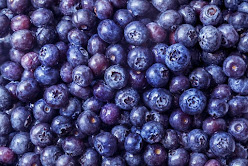
Blueberries are
one of the healthiest garden planting options. Not only are they highly nutritious, they rank #1 in antioxidant activity (neutralizing harmful metabolic by-products that can lead to cancer and age-related diseases), slow loss of mental capacity with age, reduce cholesterol build-up, prevent infections, improve eyesight, and provide numerous other health and even cosmetic benefits.
Growing this superfood successfully in Idaho does however require a fair amount of effort in planning, preparation, and maintenance
Select a site with full sun exposure to develop good fruit flavor and high yields.
Cool, moist, well-drained sandy loam or silt loam soils with about 3% organic matter and an acidic pH between 4.5 and 5.2 are best. Since alkaline soils are common in southern Idaho, soil acidification with sulfur 1 to 2 years before planting may be necessary. A soil test will tell what you’ll need to do or not do – add limestone to increase the pH or elemental sulfur to decrease the pH and if you need to increase magnesium concentration with potassium magnesium or magnesium sulfate.
Highbush varieties can grow 10 feet tall and 6 feet wide and should be spaced 4 to 5 feet apart. Select early, mid, and late season cultivars for optimal yields throughout the growing season. Yields for different cultivars vary from 2 to 20+ pounds per bush so determining how many bushes you’ll need is an important part of planning. On average, 1 pound of frozen blueberries yields 1 pint. I eat ½ pint/day 5 days/week – that math works out to 130 pounds annually for just my breakfast.
Blueberries are intolerant of standing water and drought conditions so irrigation needs to be installed and operational before planting.
For the first two springs after planting, strip off all blossoms to establish healthy canes and increase long-term yields. Afterwards, yearly, moderate pruning in late winter or early spring will maintain health and productivity. Older, dead, or diseased wood should be removed.
Organic mulch should be applied to control weeds with any that thrive under the mulch removed by hand or eradicated with glyphosate herbicide.
Blueberries are heavy feeders and prefer ammonium sulfate (21% N) fertilization because it not only adds nitrogen but acidifies the soil. Alkaline irrigation water makes regular fertilization even more critical.
After the planning, preparation, and maintenance effort, it will take 2 to 3 years to get harvestable fruit and 6 to 8 years to reach maximum production, so patience is also required.

Once your bushes are established and productive, preserve your health and harvest off-season by individually quick freezing your blueberry bounty. This and other easy preservation techniques will keep you supplied with superfood all year long. Here's a great jam recipe to try.
No matter how you like to prepare or eat them, invest in your health by making the effort to grow blueberries.
 Pruning, Maintenance and Fertilizer
Pruning, Maintenance and Fertilizer 2 teaspoons cornstarch
2 teaspoons cornstarch



